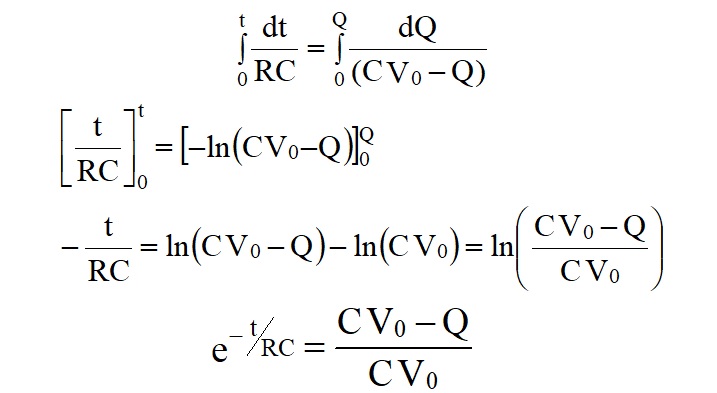
Capacitors in DC circuits

V0 = IR + V
=> V0 = IR + Q/C




The quantity RC is called the Time Constant.
Show that the voltage across the capacitor after one time constant ≈ 63% V0
To fully charge the capacitor takes a very long time.
It is normal to assume that the capacitor has fully charged after five time constants
t = 5RC
by which time the capacitor has charged to 99.3% of V0.
Differentiating this formula


by measuring the gradient.
Discharging

The supply voltage, V0, has been replaced by 0V.
=> 0 = IR + V
But Q = CV=> 0= IR + Q/C
But I = dQ/dt




V = V0e-1 = 0.368V0
=> after one time constant, the capacitor has discharged to ≈37% of the initial voltage.To fully discharge the capacitor takes a very long time.
It is normal to assume that the capacitor has fully discharged after five time constants
t = 5RC
by which time the capacitor has discharged to≈ 0.7% of V0.Energy stored in a capacitor

For each additional quantity of charge, Δq the capacitor gains while charging, an additional ΔW energy is gained.
ΔW = V Δq
But Q = C × V=> ΔW = V CΔV

=> W = ½CV2
NOTEOnly half the energy that left the power supply is actually stored within the capacitor,
the other half is dissipated within the series resistor.